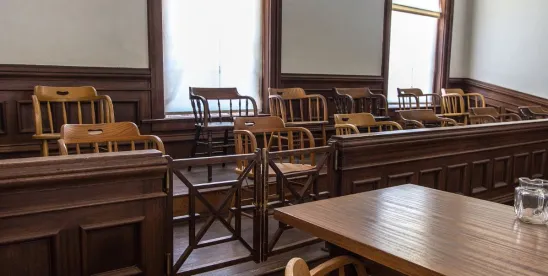Effective closing arguments are essential for trial success as it is the rare chance for attorneys to address the jury with relative freedom. In this video, Proskauer Partner Joseph (Joe) Drayton shares strategies for creating and utilizing evidence and demonstratives to communicate persuasively and build trust with the jury, ensuring your closing remarks leave a lasting and the intended impression.
Transcript
Joseph Drayton: It’s imperative to bring closing arguments to life. You want to start early and you want to finish strong. You only get so many opportunities to speak to the jury, so we have to do everything we can to make those opportunities count.
I start with a jury as being a symbol for voir dire. I plant seeds and analogies that support my case. For example, one analogy may be, “Hard work pays off in the end.” These are simple statements. You want to determine do the jurors agree with those statements? Do they disagree? You want to try to get jurors that appreciate hard work, if that’s your theme. At the end of the trial, what I would say to the jury is, “We heard a lot about hard work and we heard about hard work from my client, the defendant in this case.” And so, you start early, planting the seed and you make it grow throughout the trial. You bear fruit in your closing argument.
Another example is taking complex information, understanding why we think that information supports our case, and if it does, trying to come up with at least three reasons, and then use those three reasons to communicate with the jury. So, you take the truth, you distill it down to bite‑sized chunks and then you repeat it and then you present it to the jury in a digestible and effective way.
I find that I have to create memorable moments for a jury. There may be a question that I ask each witness at the trial. And because of the work we put in before trial, we know we’re going to get the same answer. Thus at the end of the trial when we talk to the jury, we can emphasize the consistency around the answer. The answer will support our theme and the reason why we win.
It’s very important to use visuals to connect to a jury. When you have a trial graphic that your adversary is using, take it and create a new graphic. For example, you have a graphic and the plaintiff has just said, “Here are the five important documents.” And I ask three questions per document and the witness answers the same way. I put an X on each document. So now, we’ve taken that graphic, and now it has five Xs on it. And then, I take the document in closing arguments and I explain it. That’s what you want to be able to do with the jury. You want to be able to create a visual so that they learn through that visual, and then you want to reinforce and use the visual in your closing arguments and have it supported by the witness that was on the stand. It’s not your words. It’s the document, it’s the witness testimony together that makes a positive impression on the jury.
When I bring closing arguments to life, I focus on three things. The witnesses and the memorable moments that we created throughout the trial, the bite‑sized information that I shared with the jury, and on the demonstratives that we made our own throughout the trial.
I put this all together to ensure that the dots are connected so that our case resonates with the jury.



 />i
/>i

